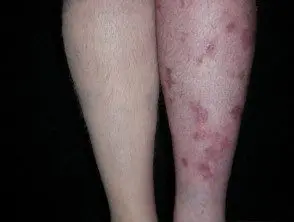What is cosmetic camouflage?
Cosmetic camouflage is the application of creams, liquids and / or powders to hide irregularities or abnormalities in the color or contour of the face or body. Cosmetic camouflage creams were first developed by plastic surgeons during World War II to cover the massive burns received by fighter pilots. Today, men, women, and children can use cosmetic camouflage to hide abnormalities caused by:
- Birthmarks
-
Rosacea
- Vascular skin problems
- Vitiligo
- Chloasma
- Cutaneous lupus erythematosus
- Jessner lymphocytic infiltrate
- Veins
- Thermal burns
- Scars from surgery, trauma, acne, etc.
- Tattoos
- Many other dermatological conditions.
Cosmetic camouflage has been shown to significantly improve quality of life. It improves the patient's self-esteem and creates a feeling of personal well-being.
How to use cosmetic camouflage
There are 3 basic approaches to cosmetic camouflage.
Concealment: concealers are often thicker and more opaque than regular foundation makeup. Effectively cover cured incision lines of surgery, scars and / or bruises on the face or body. Concealers are typically creamy products and come in a variety of shades to match the natural color of the skin. Sometimes they are mixed with color correctors to achieve a good color match. Liquid color correctors are also available that can closely resemble normal skin.
Color Correction: Color correctors are used to disguise the yellowish hue of a bruise or the general redness of a burn. Color concealers come in shades, the purple concealer mixed with concealer neutralizes yellow skin tones, while the green concealer produces a brown hue to neutralize redness.
Contouring: Contouring corrects uneven contours of the facial surface by creating dimensions using light and shadow. Dark colors make swells or bumps appear to recede, while light colors make depressions on the surface appear shallower. To achieve contour, you need a highlighter, which is approximately 2 shades lighter than your concealer, and an outline shadow, which is approximately 2 shades darker. Powder blush products are best suited for contouring.
Camouflage makeup should be removed from the face and neck every night before bed. Due to its waterproof nature, an oily cleaning cream or lotion It may be necessary to clean the makeup. Then clean with soap and water or your normal facial cleansing routine. Liquid camouflage products and camouflage cosmetics used on other parts of the body can be left on for 3-4 days before being removed and reapplied.
Cosmetic camouflage

Tattoo (left eyebrow) and additional pencil (right eyebrow)

Psoriasis disguised as cosmetic camouflage on the right leg
Tips for cosmetic camouflage
It may take some practice to achieve a satisfactory final appearance. In some countries, hospitals, charities, or societies have cosmetic camouflage clinics where individual camouflage requirements are assessed. For example, Look Good Feel Better®, a charity program sponsored by the Cosmetic Toiletry and Fragrance Association (CFTA) and organized by the Cancer The New Zealand Society organizes cosmetic workshops across the country to improve the self-esteem of women facing the side effects of cancer. Similar programs are available in the United States and in many other countries.
Standard daily makeup may be enough for your needs. The important thing is to use products that do not irritate your skin. Your doctor or dermatologist You may recommend special cosmetic camouflage products available through your pharmacy or special clinics.

